If you are an e-commerce marketer, chances are you spend a considerable amount of time analyzing how your website visitors move through the purchase funnel—identifying key touchpoints, motivations, and hurdles that influence the decision-making process. This insight is vital for tailoring strategies that effectively engage potential customers, optimize user experience, and ultimately, increase sales.
However, the journey to unlocking these insights is a hard one, with customer interactions scattered across multiple channels and platforms. Moreover, the increasing emphasis on user privacy and the phasing out of traditional cookies have introduced significant hurdles in tracking and understanding customer behavior, leaving marketers in search of new, privacy-compliant tools.
Pathmonk is an AI-powered, cookieless analytics tool, that offers a comprehensive and easy-to-understand view of the customer journey without compromising on privacy. With its advanced analytics and machine learning capabilities, marketers can dive deep into the nuances of how visitors interact with their e-commerce site—from the first click to the final purchase and beyond. Let’s show you how!
Table of Contents
Step by Step: Analyzing your Ecommerce Customer Journey with Pathmonk
Analyzing your e-commerce customer journey with Pathmonk is as simple as going to the dedicated report we have created precisely for this purpose.
1. Access the Buying Journey Report
On your Analytics dashboard, click on the Buying Journey report within the left-side menu. Choose the specific dates or periods you wish to analyze. You have the option to compare different periods to understand how your customer journey metrics have evolved.

Choosing the right timeframe can help you understand seasonal trends, the impact of specific campaigns, or long-term changes in customer behavior.
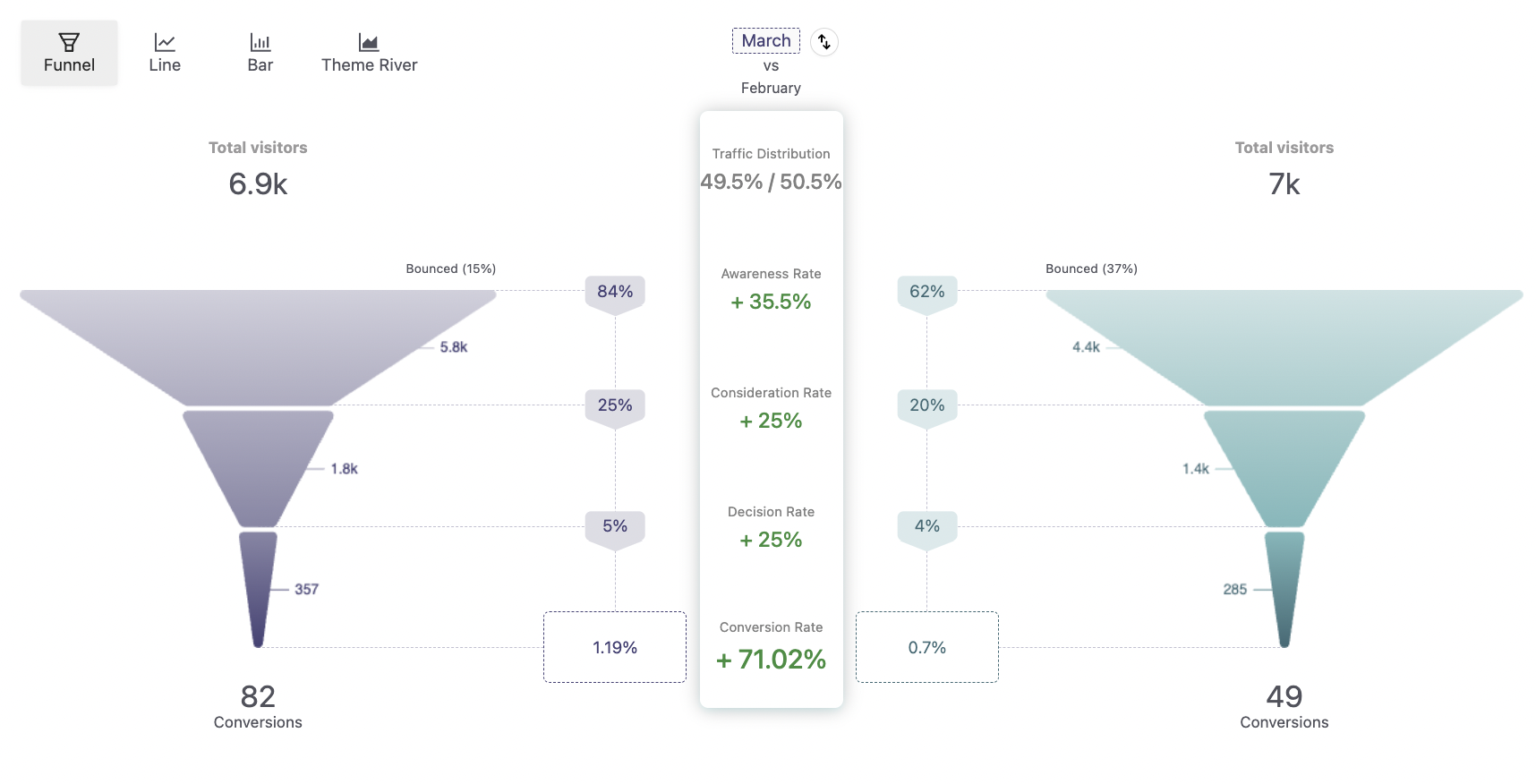
The Buying Journey report offers a holistic view of your e-commerce performance across all stage. Here, you’ll see how users interact with your site from their first visit through to purchase.
You can also filter and look into specific buying journeys to see how various factors such as acquisition channels, sources, and campaigns influence customer behavior and decision-making. This can help you identify how different customer segments behave and which paths to purchase are most effective.
2. Choose the Best Visualization for Your Data
By default, your data will be displayed in a funnel format, which is useful for understanding the conversion rates at each stage of the customer journey.
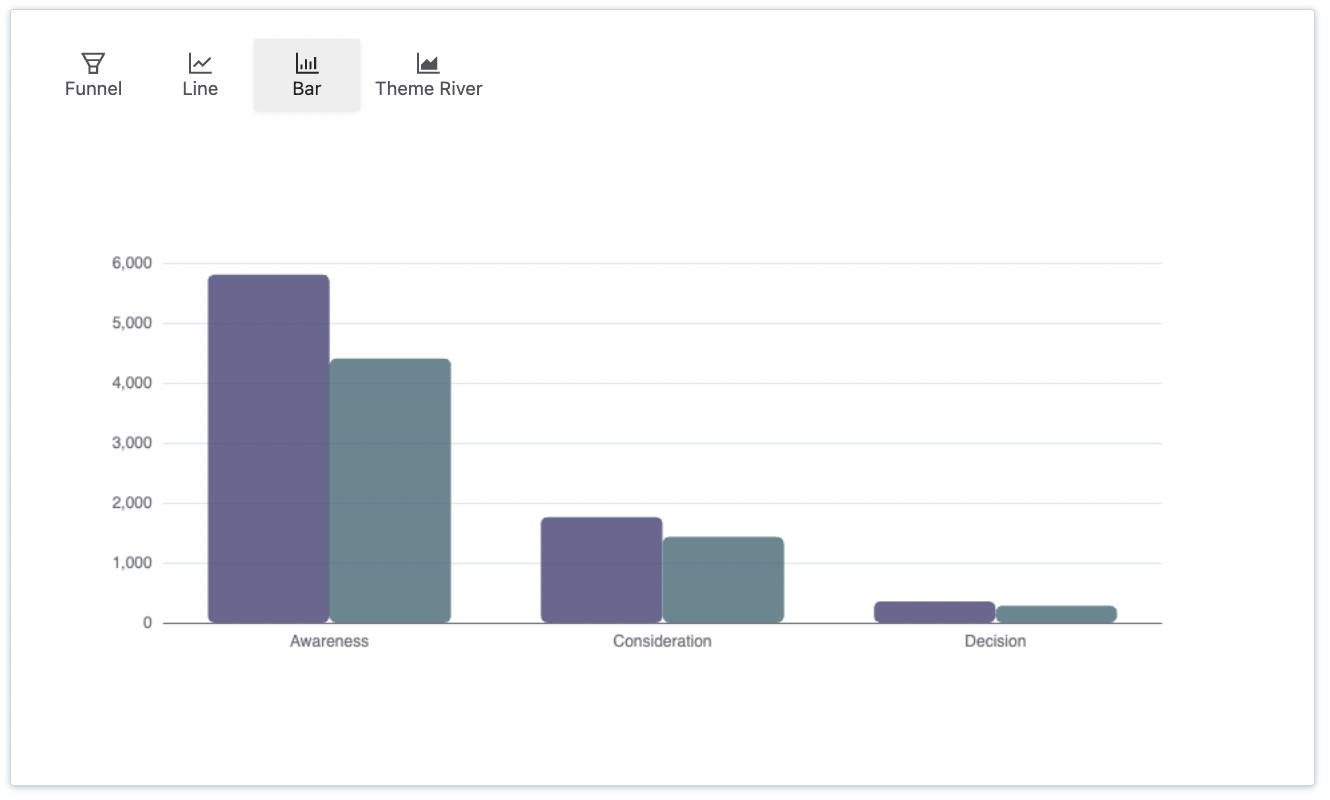
Explore alternative visualization formats offered by Pathmonk Intelligence, such as ‘line’, ‘bar’, and ‘theme river’ charts. Each format can provide unique insights and make it easier to interpret your data. For instance, line and bar charts can highlight trends over time.
3. Get Automated AI-Powered Insights
Under your customer journey, you will find an AI-generated report summarizing these insights in an easily digestible format. This means you don’t have to spend your valuable time combing through data or trying to interpret complex analytics. The insights you need to make informed decisions are presented clearly and concisely.
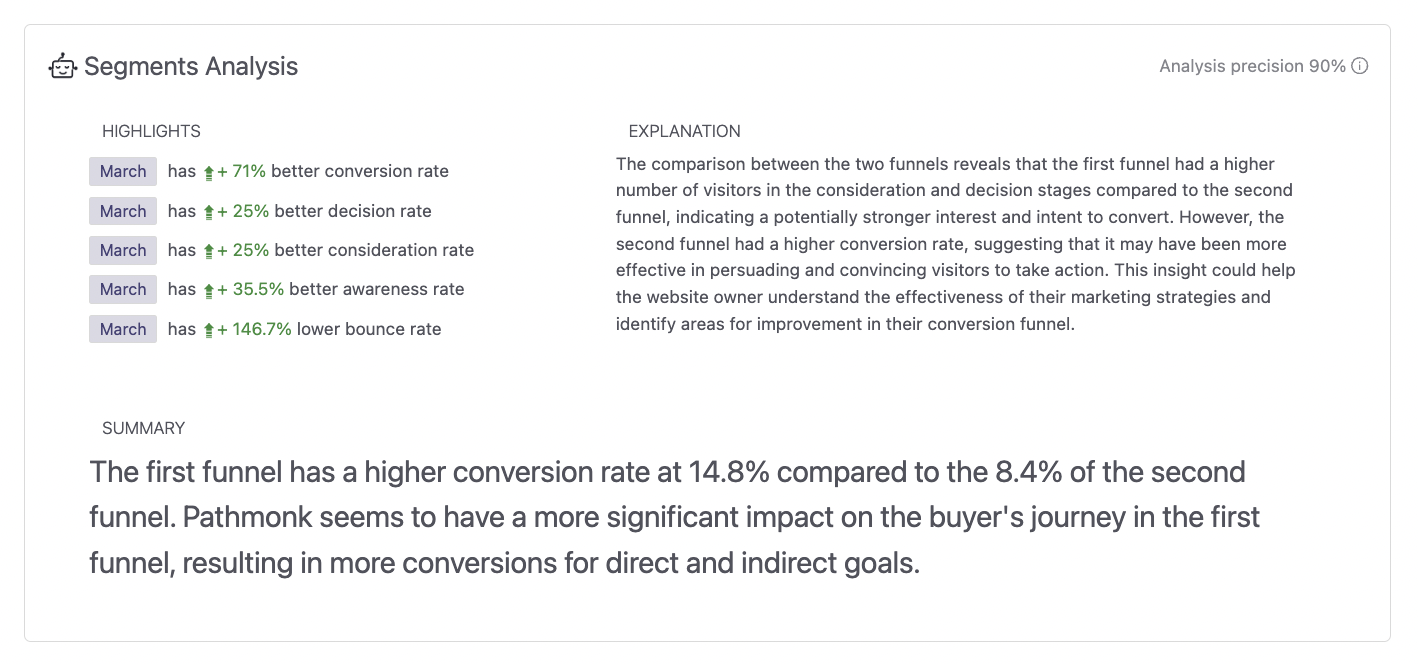
4. Analyze Journey Specifics and Acquisition Attribution
Pathmonk Intelligence also provides detailed insights into the nuances of each customer journey, including how customers are acquired for each stage and what influences their decisions to convert.
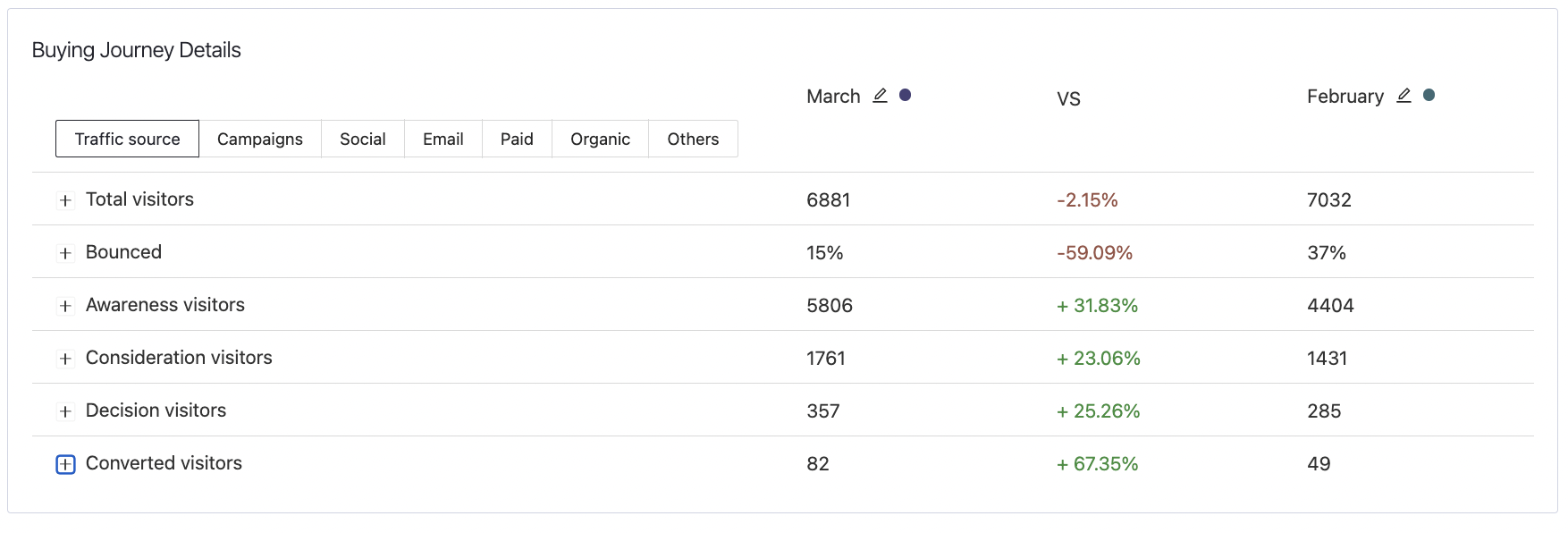
Analyze the acquisition attribution data to understand the sources and channels that are most effective at driving valuable customer actions on your site.
What Is a Customer Journey?
A customer journey is the complete sequence of experiences that customers go through when interacting with a company and its products or services.
This journey encompasses all the stages from initial awareness, through engagement and decision-making, to post-purchase actions including customer retention and advocacy.
Each touchpoint or interaction the customer has with the brand is considered a part of this journey.
The structure of the customer journey can vary significantly depending on the type of company and product or service offered, but this is how a typical e-commerce customer journey could look like:
The journey begins the moment a potential customer becomes aware of your e-commerce brand. This could happen through various channels such as social media ads, search engine results, influencer endorsements, or word-of-mouth recommendations. At this stage, the potential customer has identified a need or interest and is starting to look for solutions.
Once aware of your brand, the customer moves into the consideration stage. They start visiting your website, browsing through your product catalog, reading product descriptions, and checking out reviews and ratings. This stage is critical because the customer is evaluating your offerings against their needs and preferences, as well as comparing them with your competitors.
Effective content marketing, SEO, and user-friendly website design play crucial roles here to keeping the customer engaged and interested.
At this point, the customer is ready to make a purchase decision. Factors influencing this decision include price, product features, shipping options, return policies, and the overall ease of the purchasing process. Trust signals such as secure payment options, clear contact information, and positive reviews can greatly impact the customer’s willingness to proceed with the purchase.
The decision stage naturally leads to the action or purchase stage. The customer adds items to their shopping cart, enters their shipping information, and completes the payment process. A smooth, hassle-free checkout experience is crucial to reducing cart abandonment rates, increasing e-commerce conversion rates, and ensuring the purchase is finalized.
- Post-Purchase Stage
The customer journey doesn’t end with the purchase. The post-purchase stage is where customers form lasting impressions based on the product quality, shipping speed, packaging, and the customer service they receive.
Follow-up emails, requests for product reviews, and customer support in case of issues are all part of this stage. This is also the phase where efforts to encourage repeat purchases, upsells, and customer loyalty are intensified through personalized offers, loyalty programs, and engaging content.
- Retention and Advocacy
The ultimate goal of the e-commerce customer journey is not just a one-time purchase but fostering a long-term relationship. Satisfied customers become repeat buyers and brand advocates, recommending your products to others and sharing their positive experiences on social media or through word-of-mouth. This stage is crucial for building a loyal customer base and driving sustainable growth.
In e-commerce, understanding and optimizing each stage of this journey is essential. Marketers must continuously gather and analyze data on customer behavior and preferences to refine their strategies, improve the customer experience, and ultimately, enhance customer satisfaction and loyalty.
What Are the Unique Features of an E-commerce Customer Journey?
- Shorter Decision Cycles: In many non-e-commerce sectors, especially B2B, the decision-making process can be longer and involve more steps, including proposals, negotiations, and approvals. E-commerce customers often value speed, ease of use, and convenience highly. The journey from awareness to purchase can be swift, with decisions made in hours or days rather than weeks or months.
- Digital Touchpoints Predominate: Other businesses, especially in sectors like retail, hospitality, or B2B, often blend digital and physical touchpoints. Customer journeys may include in-person interactions, phone calls, and physical mail alongside digital engagements. The e-commerce journey, however, is primarily digital, from discovery to post-purchase engagement. This includes interactions via the website, social media, email marketing, and digital ads.
- Personalization: While personalization is critical in all sales-related contexts, the way it’s implemented can differ. E-commerce sites might personalize product recommendations based on browsing history, or best-selling products, a B2B company might personalize the testimonials being shown.
- Competitive Comparison: Customers in the e-commerce space can easily compare products, prices, and reviews across multiple sites, making the consideration stage highly competitive. That means e-commerce marketers need to employ strategies that capture and retain the customer’s attention before they leave to check out a competitor’s offering.
Free on-page SEO template
Improve your rank and website traffic with this step-by-step guide to on-page SEO.
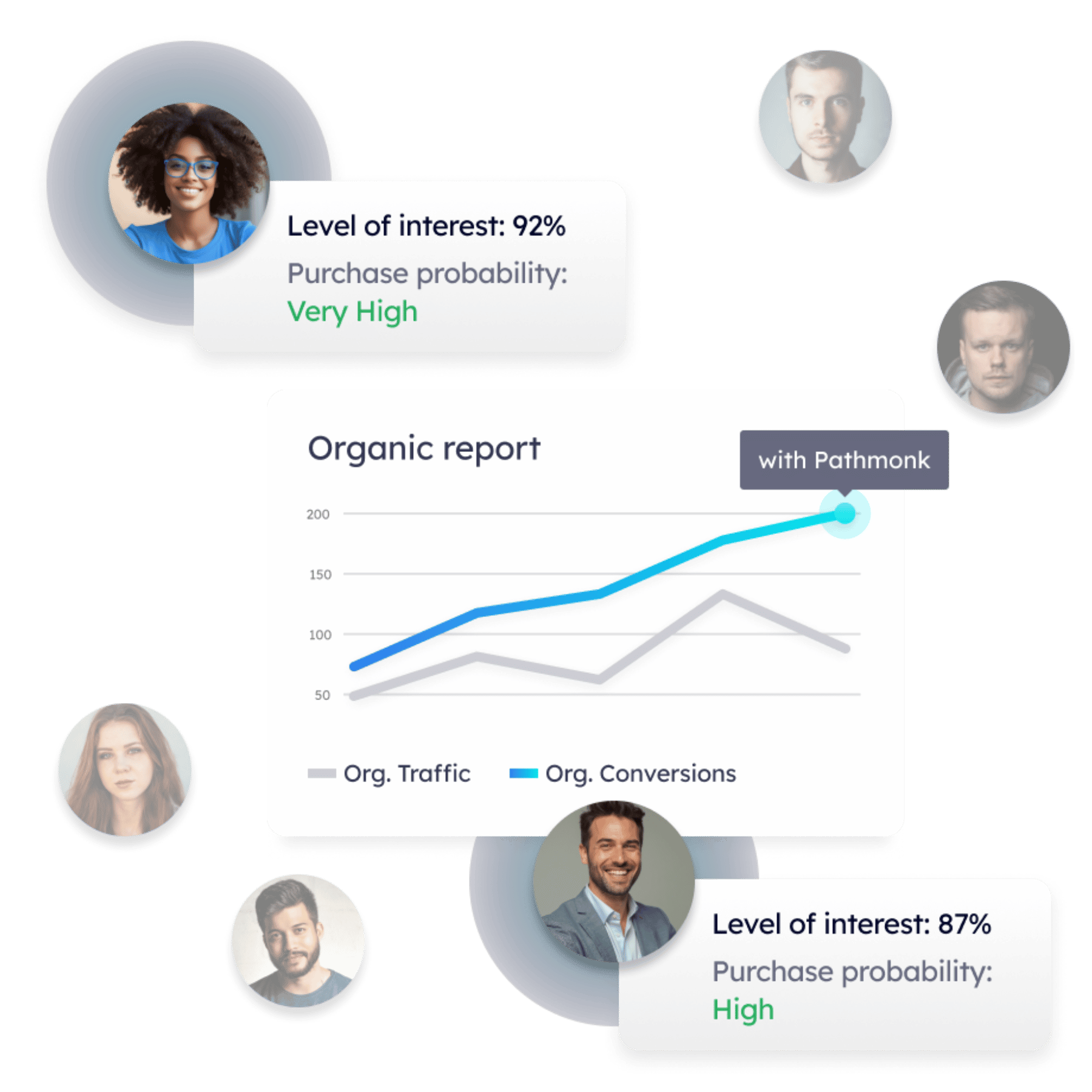
Why Is It Hard to Track an E-commerce Customer Journey?
Tracking an e-commerce customer journey presents several challenges, largely due to the complexity of modern digital interactions and evolving consumer behaviors. Understanding these challenges is crucial for e-commerce businesses aiming to optimize their customer experience and marketing strategies.
Here are the main reasons why tracking an e-commerce customer journey can be particulary difficult, and how to solve these challenges with Pathmonk Intelligence:
1. Multiple Touchpoints and Channels
Customers interact with brands through a myriad of channels and touchpoints, including social media, email, search engines, and more. Each of these interactions plays a role in the customer journey, but tracking across these varied channels can be complex, requiring sophisticated tools and integration.
Pathmonk Intelligence integrates data from various channels and touchpoints into a unified analytics platform. This enables businesses to track customer interactions across all platforms, providing a holistic view of the customer journey.
2. Device Hopping
Many customers use multiple devices during their purchase process—researching a product on a smartphone, for instance, but switching to a laptop to make the purchase. This device hopping makes it challenging to maintain a cohesive view of the customer journey.
With its advanced tracking capabilities, Pathmonk Intelligence can follow the customer journey across multiple devices. By identifying and linking the actions of a single user across smartphones, tablets, and desktops, it offers a cohesive picture of the journey, helping businesses understand cross-device behaviors.
3. Privacy Regulations and Cookie Limitations
Privacy regulations like GDPR and CCPA have led to tighter controls over customer data. Additionally, the shift away from third-party cookies affects the ability to track user behavior across the internet. These changes mean marketers must find new, privacy-compliant ways to gather and analyze customer data.
However, Pathmonk Intelligence uses cookieless technology to track user behavior in a privacy-compliant manner. This ensures businesses can gather valuable insights without infringing on privacy regulations or being hindered by the declining use of third-party cookies.
4. Attribution Modeling
Determining which touchpoints and channels have the most influence on customer decisions (attribution modeling) is complex. Marketers must decide between different models and have the analytical capability to apply them effectively.
Pathmonk Intelligence offers sophisticated attribution modeling capabilities, enabling businesses to accurately assess the impact of various touchpoints and channels on customer decisions. By understanding which interactions drive conversions, companies can allocate resources more effectively and optimize their marketing strategies.
5. Technical Limitations and Implementation
Implementing the tools and technologies needed to track the customer journey can be technically challenging. It requires a good understanding of web analytics, data integration, and possibly even custom solutions to bridge gaps in tracking capabilities.
Pathmonk is built to be user-friendly, minimizing the technical barriers to implementation. Its intuitive interface and straightforward integration process make it accessible for businesses without requiring extensive technical expertise. Additionally, Pathmonk’s support team is available to assist with setup and optimization, ensuring businesses can leverage the platform’s full capabilities.
Understand your customer journey analytics
See how your users behave, find drop-offs, and receive actionable insights with AI.

How to Add Pathmonk Intelligence to Your Marketing Strategy
Step 1: Set Up your Pathmonk Intelligence Account
If you want a hands-on test of how Pathmonk Intelligence works and what it can do for you, sign up for a free Demo. This hands-on experience will provide you with valuable insights into how Pathmonk Intelligence can work to your advantage.
Alternatively, you can directly start your journey with Pathmonk Intelligence by signing up for an account.
Step 2: Onboarding and Installation
Once registered, the next step is to integrate Pathmonk Intelligence with your platform.
The onboarding process has been designed to be exceptionally user-friendly, making it a self-service experience that ensures you’re up and running smoothly.
Step 3: Data Configuration
Your business is one-of-a-kind, and so are your objectives. We encourage you to customize your data collection settings to precisely align with your unique business goals. This level of customization empowers you to tailor your goals, ensuring that you receive the most relevant insights that will truly impact your success.
You have the flexibility to establish your goals using various methods: through a URL, a pixel that doesn’t rely on cookies, or by integrating with a third-party application. No matter which option you choose, you won’t need developers. However, if you encounter any issues with your data configuration, you can always contact our support team.
Applying Customer Journey Insights to your Marketing Strategy
Translating customer journey insights into actionable steps is crucial for immediate impact and long-term success. Here are specific, actionable strategies you can implement:
Implement AI-Powered Personalization for Immediate Engagement
- Deploy AI-powered personalized experiences to engage customers who are spending a lot of time on certain pages or seem to be hesitating in the checkout process.
- Program Pathmonk Accelerate to offer help, answer FAQs, provide discount codes, or guide customers through the checkout process. You can preview how it would look on your actual e-commerce for free with our interactive demo.
Optimize Flow & Checkout Process
- Refine the design, copy, and call-to-action (CTA) buttons on key pages, based on the stages where users drop off or engage the most.
- Identify common exit points in the checkout process and simplify these steps. This could mean reducing the number of fields in a form or offering more payment options.
Enhance Product Discovery
- Use insights on popular products or categories to feature them prominently on your homepage or navigation menu.
- Implement a recommendation engine such as Pathmonk Accelerate that suggests products based on what e-commerces are most interested in displaying.
Refine Your Content Strategy
- Develop blog posts, videos, or guides that address common questions or interests your customers have at the awareness or consideration stage.
- Create comparison content or case studies to help customers in the decision stage understand the value of your products over competitors.





